
We left Vigo and headed north to Santiago
de Compostela to see the cathedral. Kathleen did a great job of getting us
parking close to the cathedral (no small feat) and it
was an easy walk from the car park to the cathedral.
When we completed our tour of the museum and the actual
cathedral, we continued north to the city that is at the
northwest-most corner of Spain - A Coruna.
The photos below are what we saw.

It had
been overcast all morning and it started to drizzle as we
arrived at the cathedral. We decided to pay the small fee
to see the museum associated with the cathedral (good choice)
and went inside out of the rain. The history of the
cathedral and associated buildings in fascinating. For
most of the 8th century, the Iberian Peninsula was under rule of
the Moors. South of the Pyrenees mountains, a reconquest
of the area was led by the Asturian monarchs. At
approximately 820 AD, a mausoleum was discovered that held the
remains of "James the Greater" one of Jesus' apostles. A
church was constructed in 1075 to protect his relics and that
church was quickly replaced by a larger one to handle the influx
of subsequent pilgrims. The
church has been upgraded, expanded and renovated many times over
the centuries resulting in the huge structure that exists today.


There
were a number of stone sarcophagi in the corridors. Based
on the carvings on the cap stone, this likely held a bishop.

The cap
to this sarcophagus had the likeness of a warrior missing one
leg. We assume he had been "de-feeted" in battle.

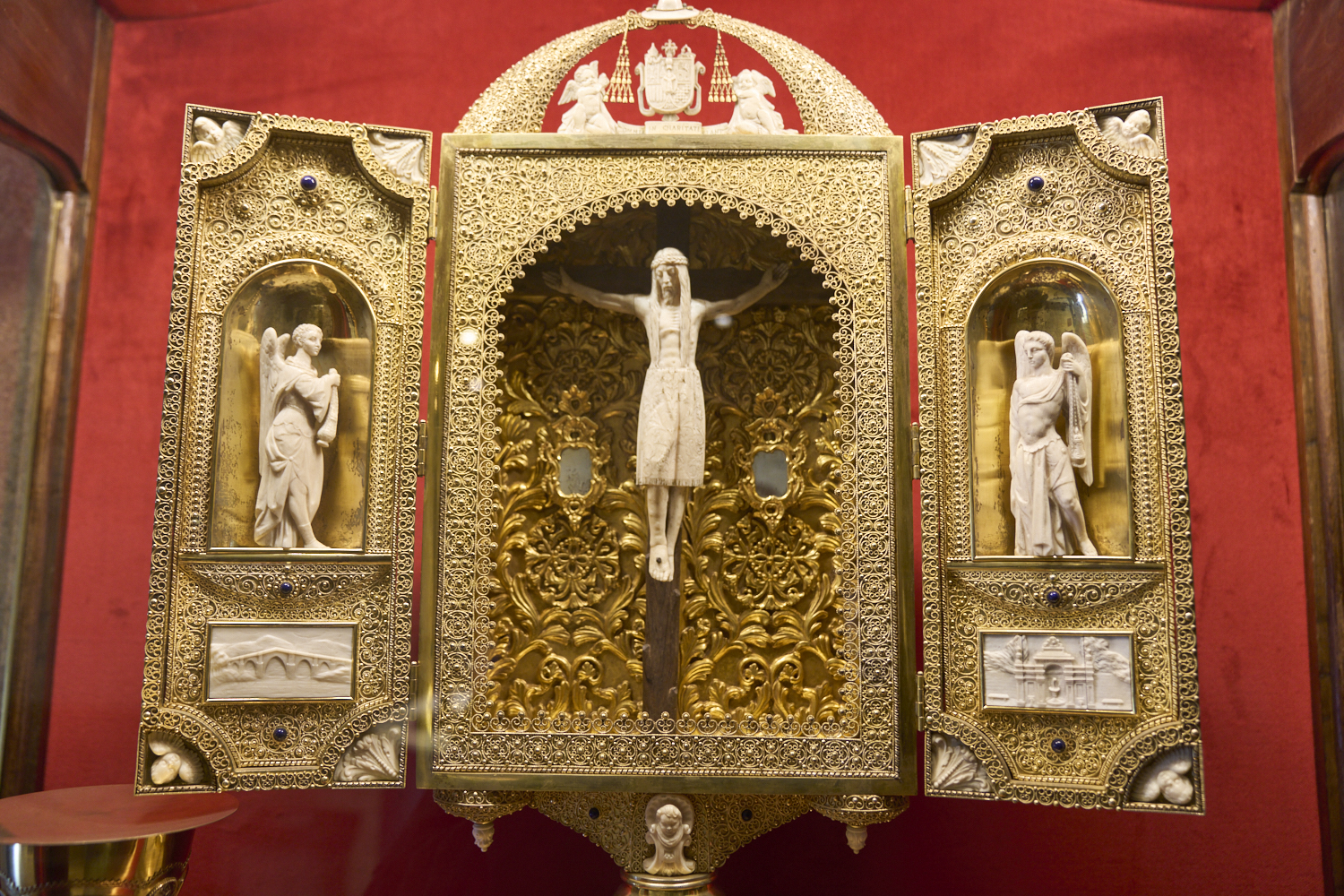
The
museum pass allowed access and viewing of the oldest relics of
the church. I assume that only a small sample of the total
collections of relics were available for viewing.

This
carved wall contained a largge number of relics, most far enough
away that it was difficult to see them in the dim light.

A zoom
view of the previous photo shows intricate jeweled crucifixes
and statues.
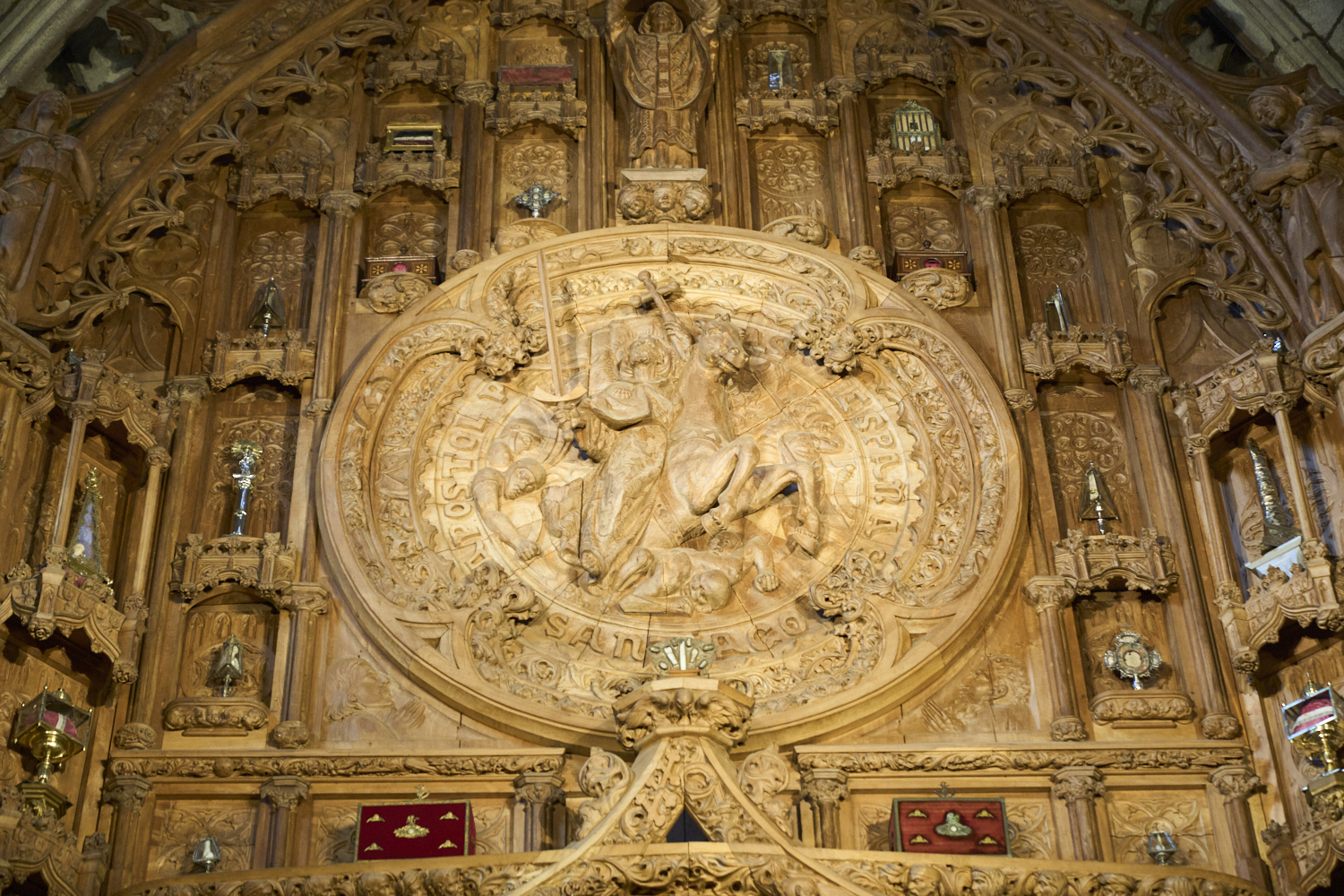
The
carving that was the centerpiece of the wall was very ornate.

Above is
a gold monstrus. Very big, very ornate and detailed and
crafted of gold.

More
gold encrusted with jewels.

In a
safe, with a plexiglass cover, was more detailed gold relics.

These
gold items were in the foreground of the previous photo, but not
visible due to the low depth-of-field resulting from the dim
light.
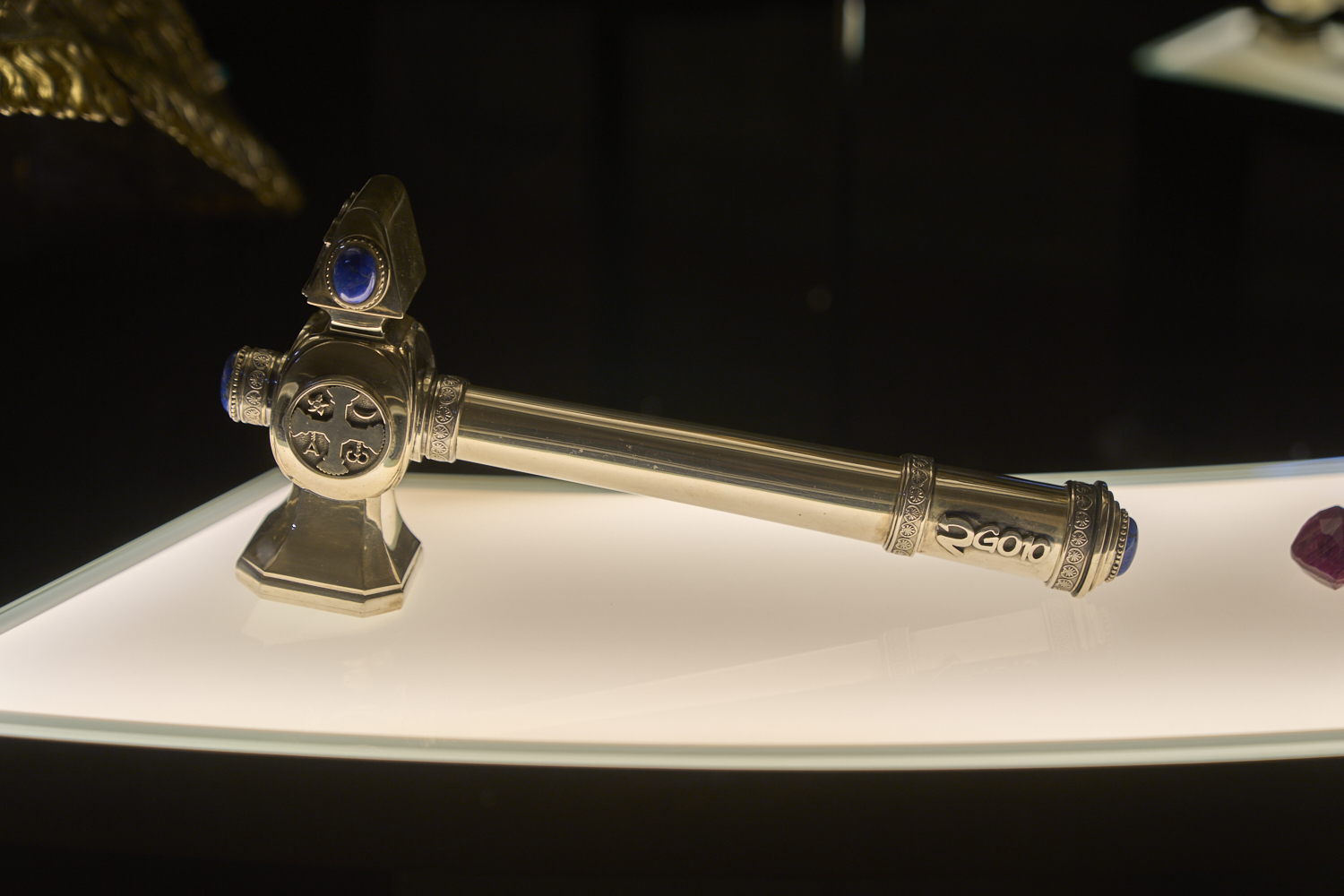
A gold
scepter.
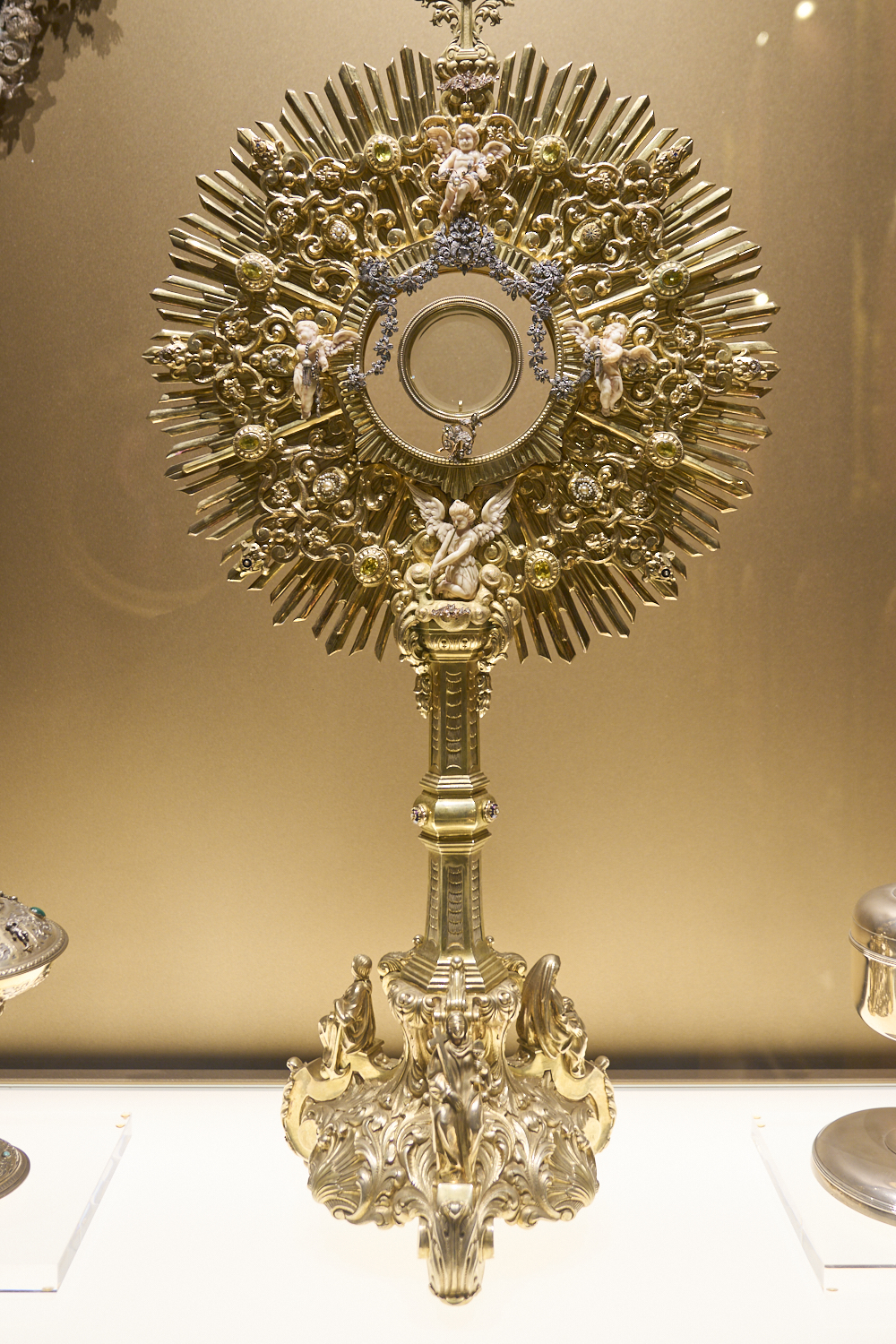
Fantastic
detail in these gold relics.
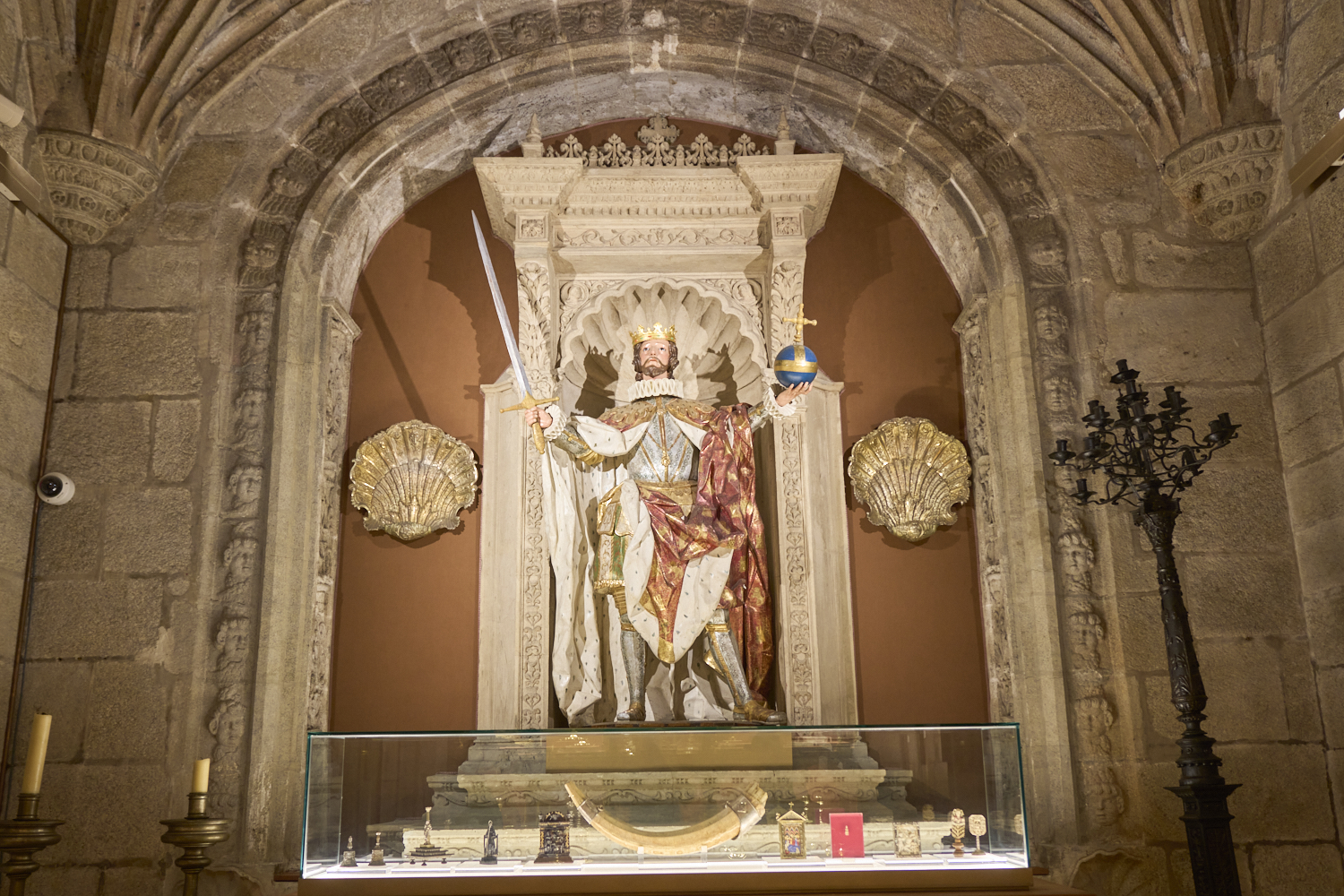
Detailed
statuary that was gilded in gold. Note the elephant tusk
that was used as a horn.

There
seemed to be a morbid facination with death, likely because it
was the ultimate cudgel for control of the church's
congregation. This carving was over the portal to the
relic chamber.
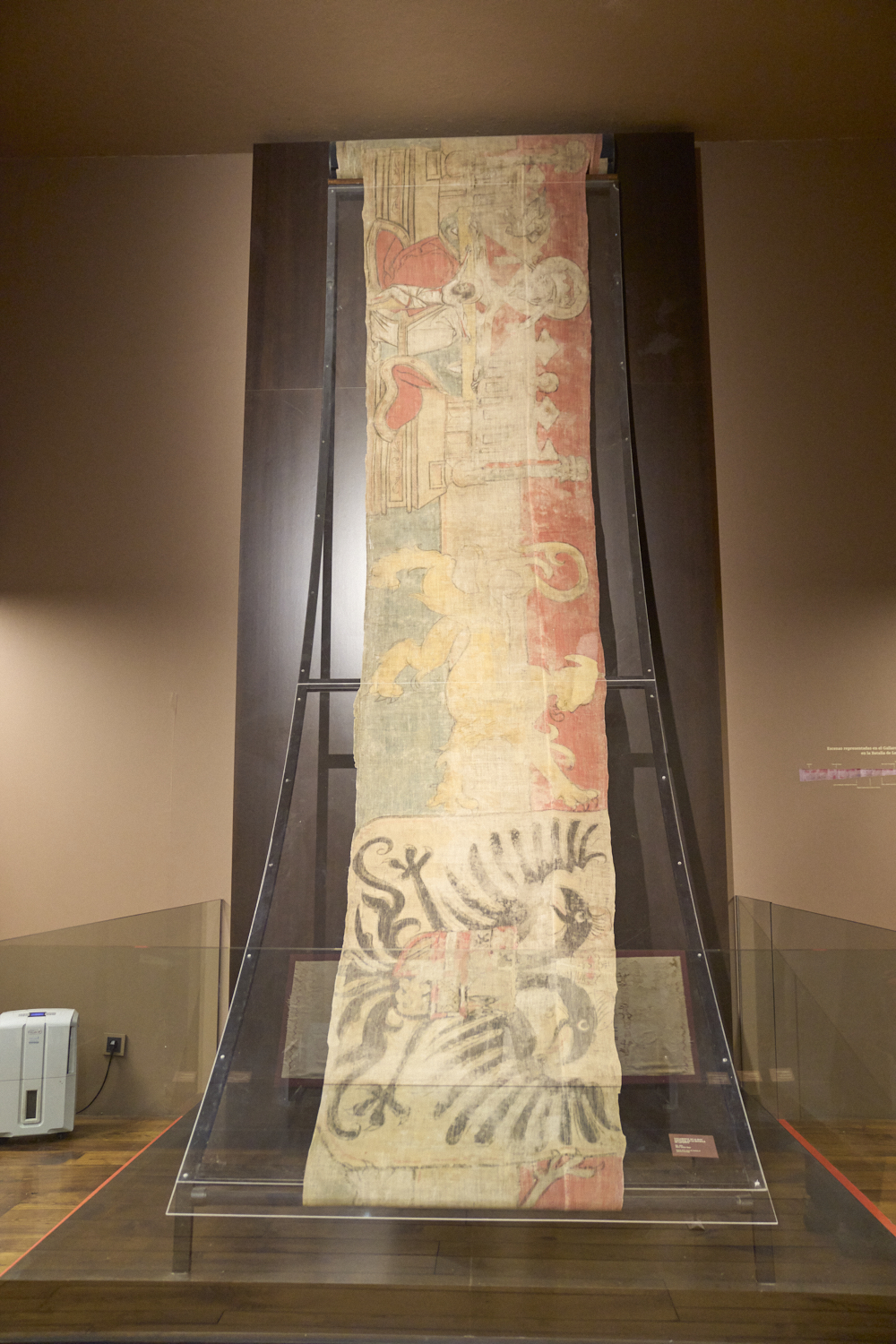
Moving
on past the relic chamber, there were more rooms that held
ancient tapestries.

From an
upper floor of the museum we could see out into the
courtyard. The rain was deterring folks from being in the
open. Later, when the rain abated, this area was filled
with large crowded.

Most of
the older tapestries were religious in subject, but later ones
showed depictions of life at the time of the weaving.

There
were some more recent paintings on display in the gallery.
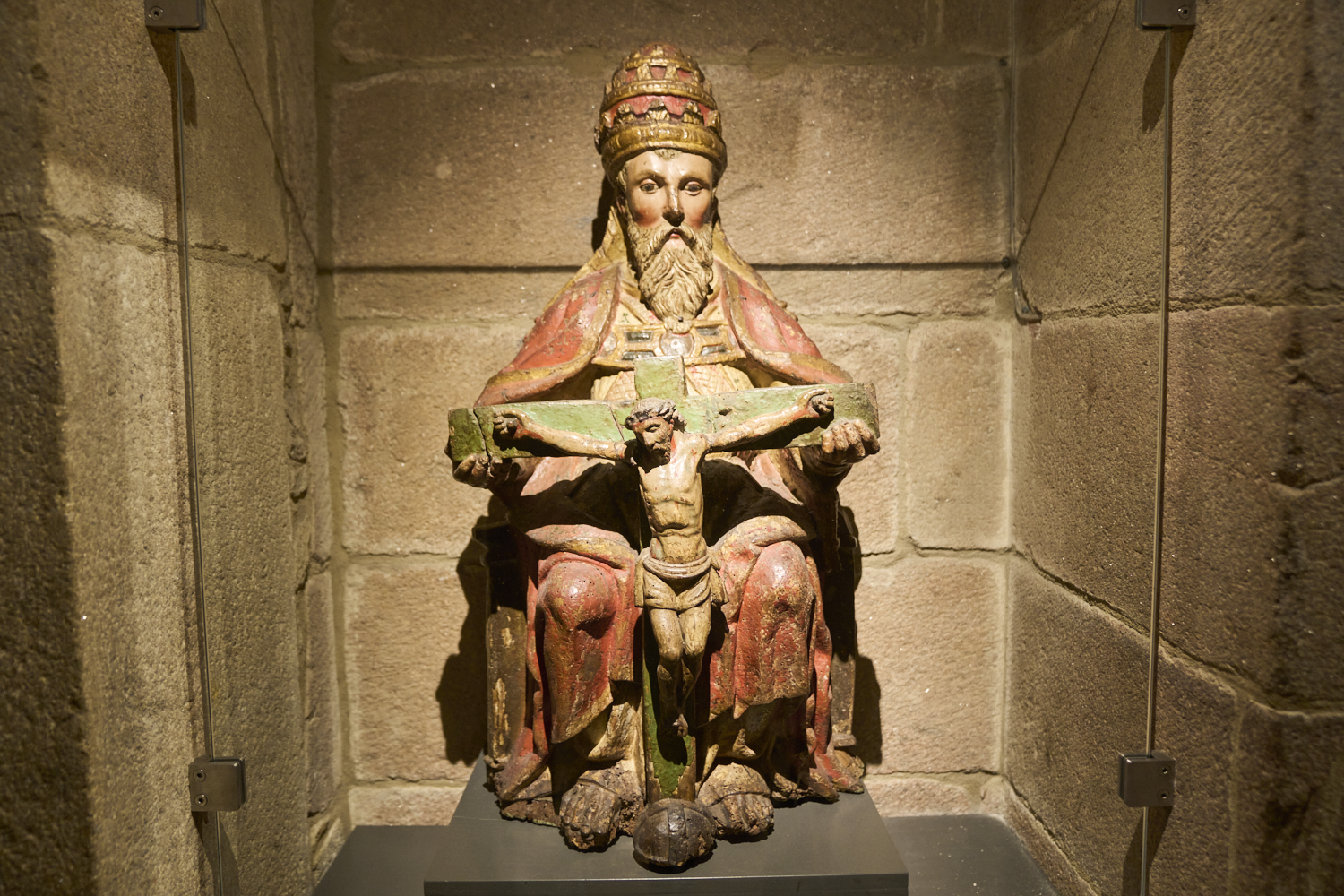
This
statue was circa the 13th century.

No
description was given, but I am assuming that the saint was
weighing souls.

Rather
macabre, even for the catholic church.

The
noon mass completed and we left the museum to see the main
cathedral. This statue is in the entry courtyard.

The
main tower was ornate and very spectacular. Height of
the tower can be judged relative to the people on the stairs.
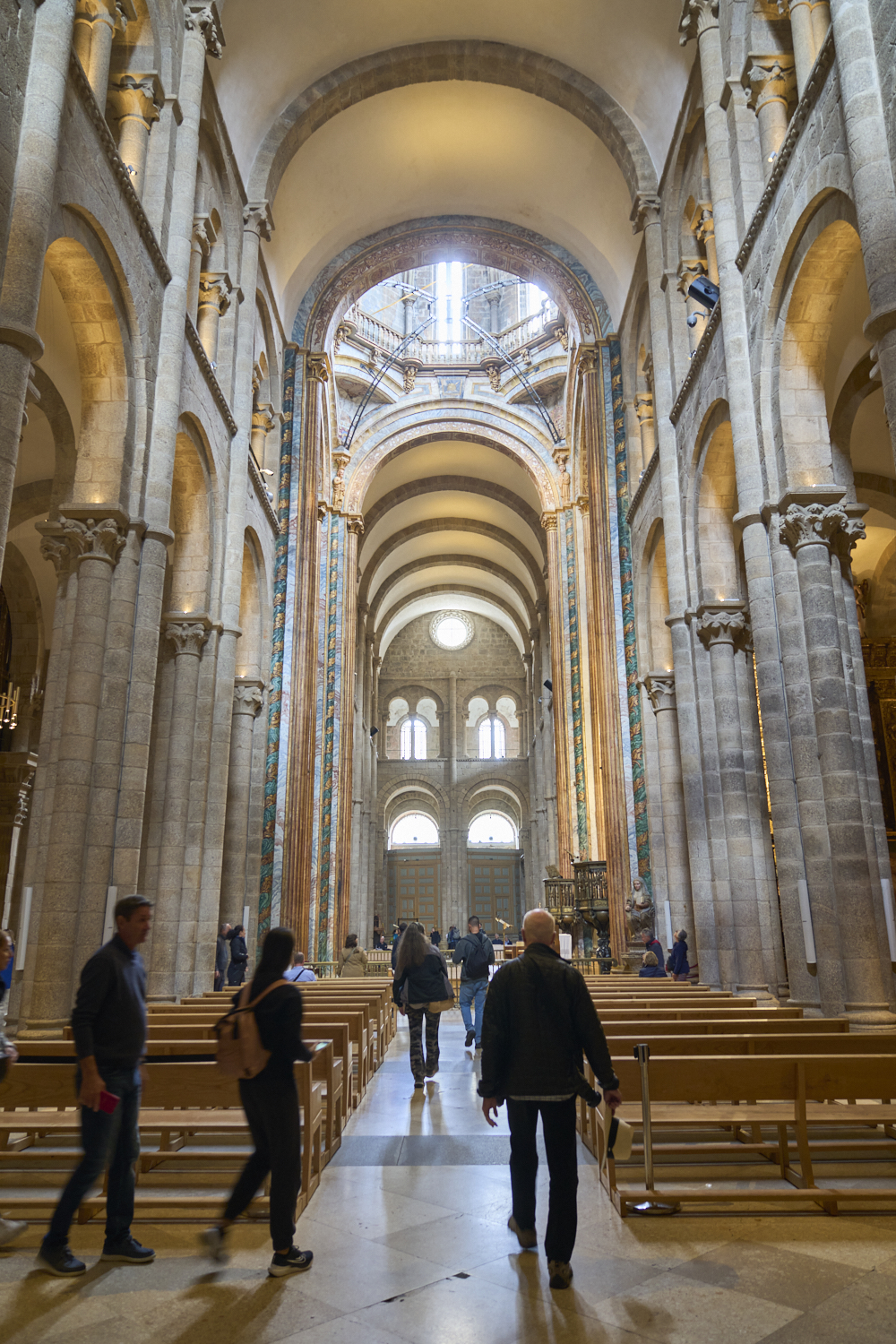
Inside
the church was impressive in its size but it was way less
ornate than some of the French cathedrals that we have seen.

There
was a huge pipe organ that spanned both sides of the main
chamber.

The
altar was large and there was a tourist path that went behind
the altar and into the crypt below. The crypt supposedly
holds the bones of James the Greater.
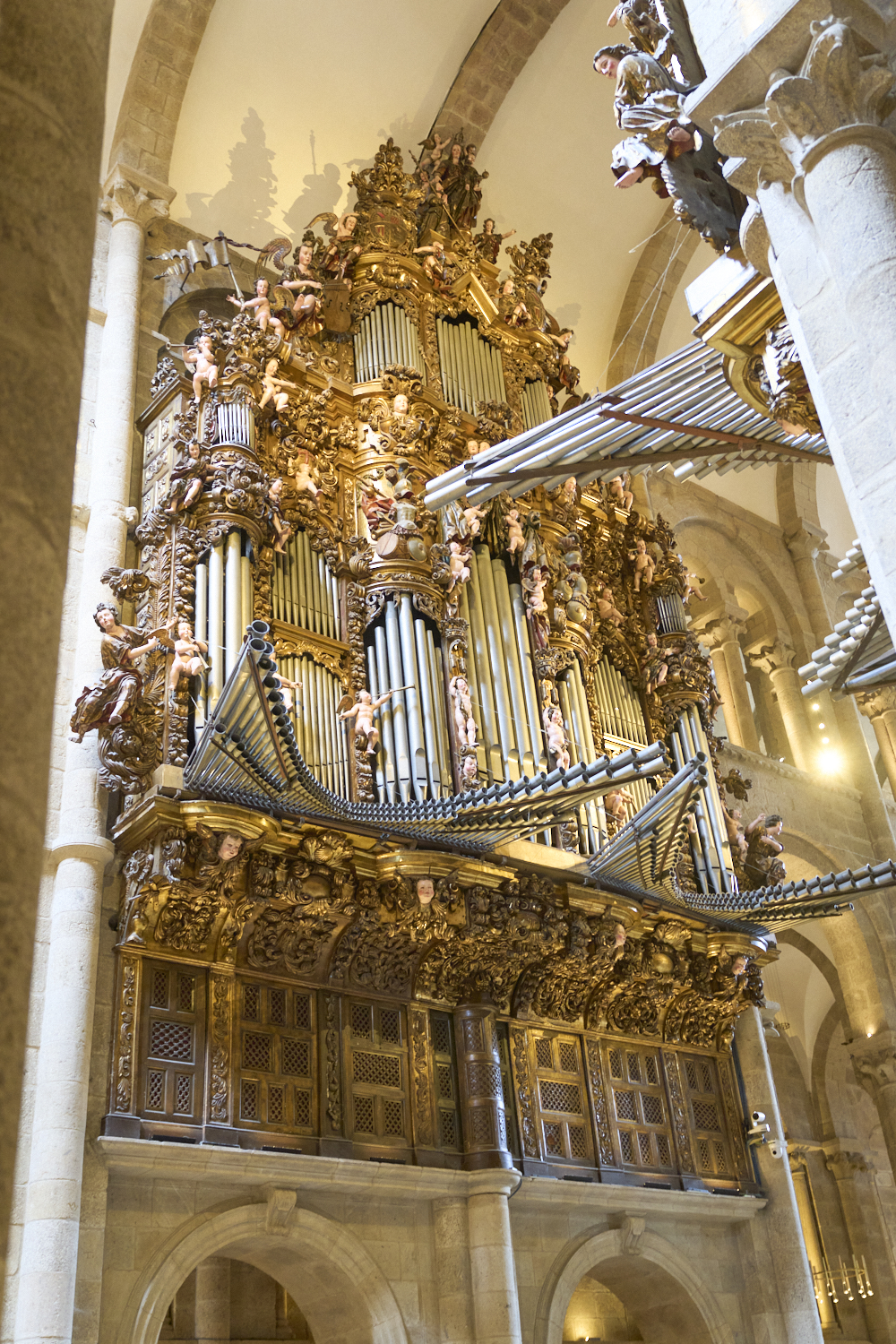
A view
of the opposite side of the organ. The pipes extended
both vertically and horizontally.


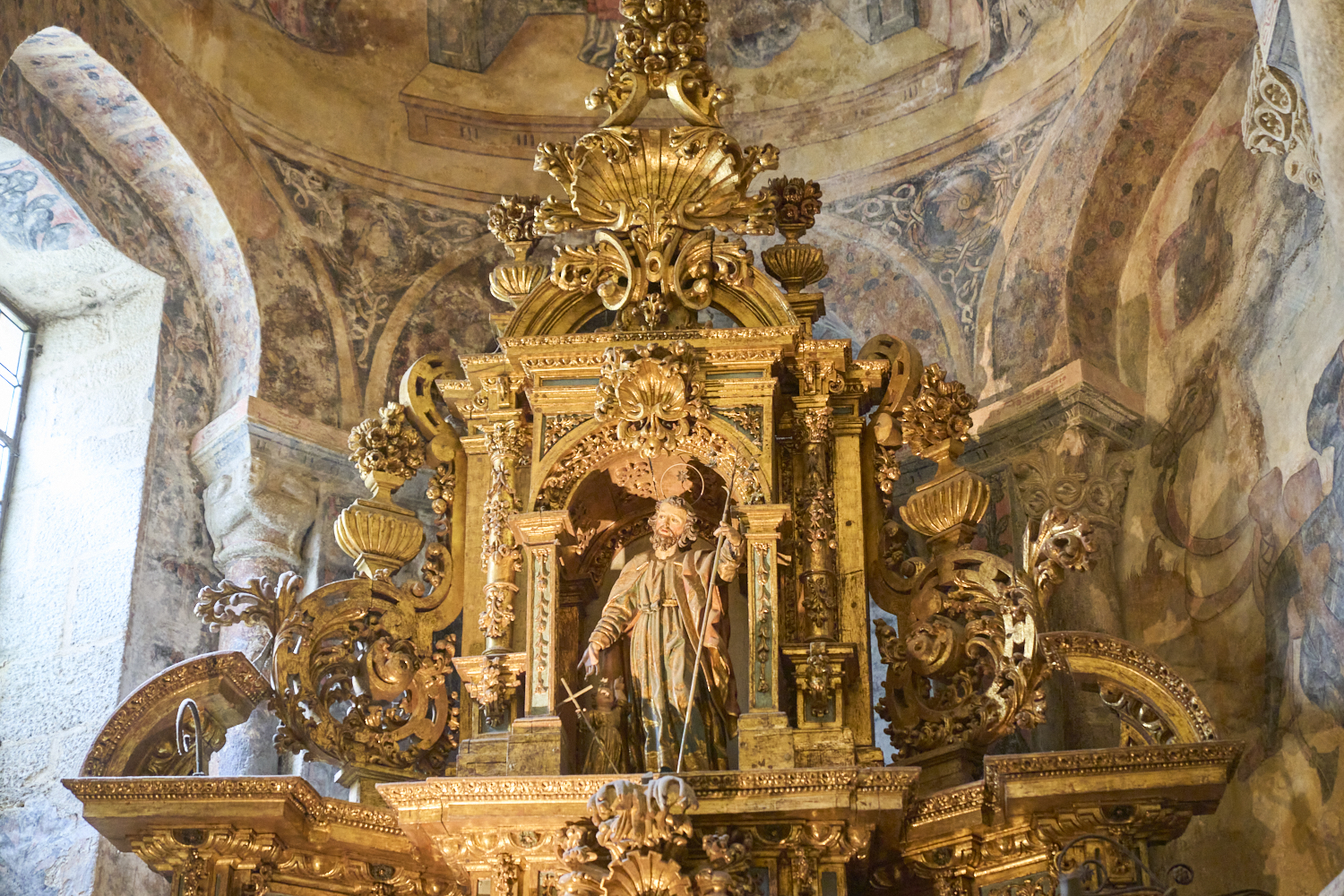

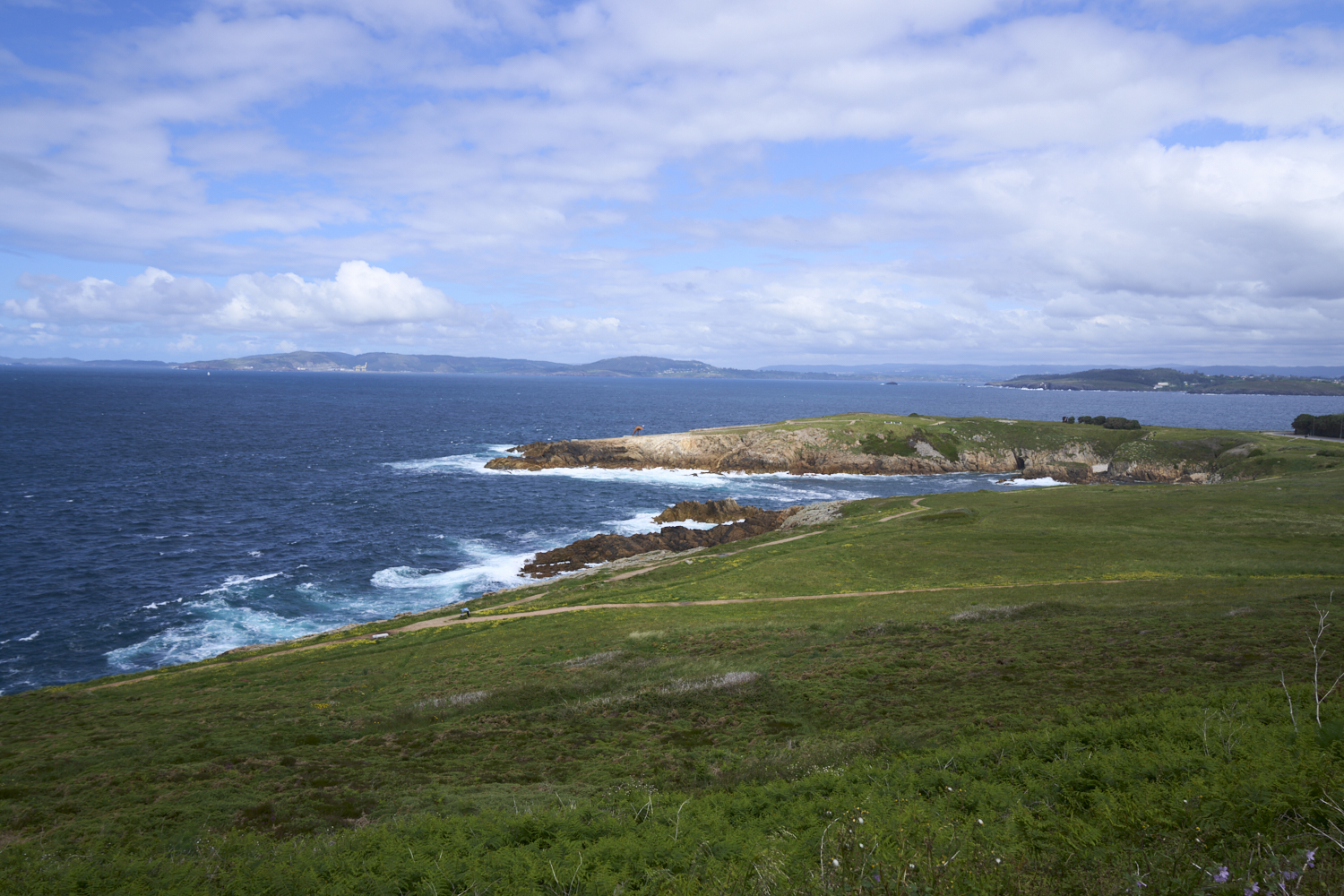


| Previous Adventure | ||
| Trip Home Page |
Photos and Text Copyright Bill Caid 2024, all rights
reserved.
For your enjoyment only, not for commercial use.